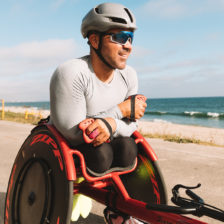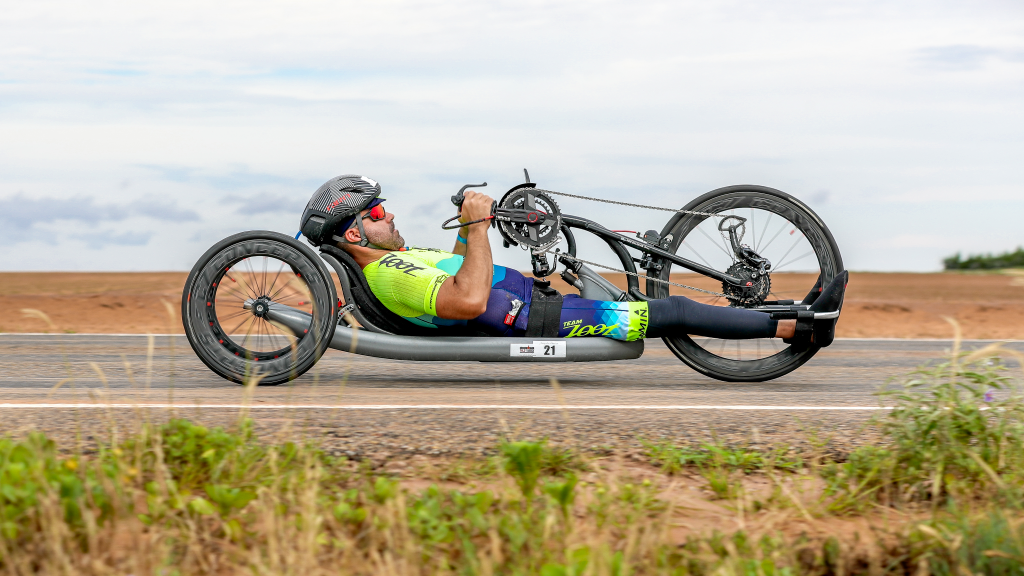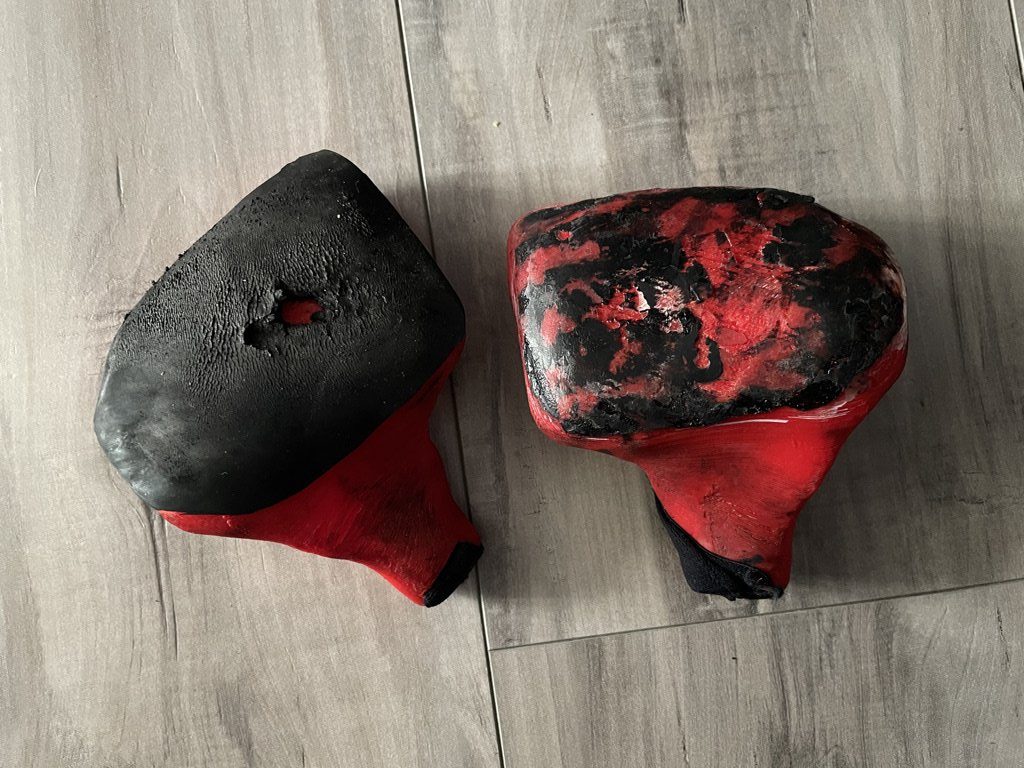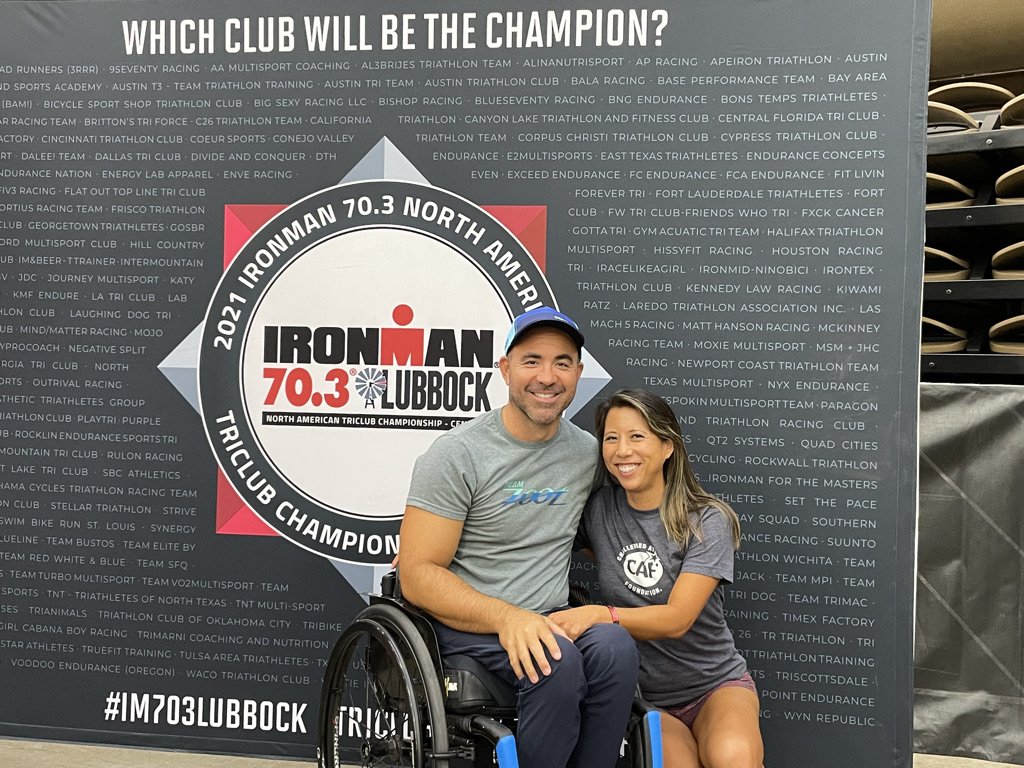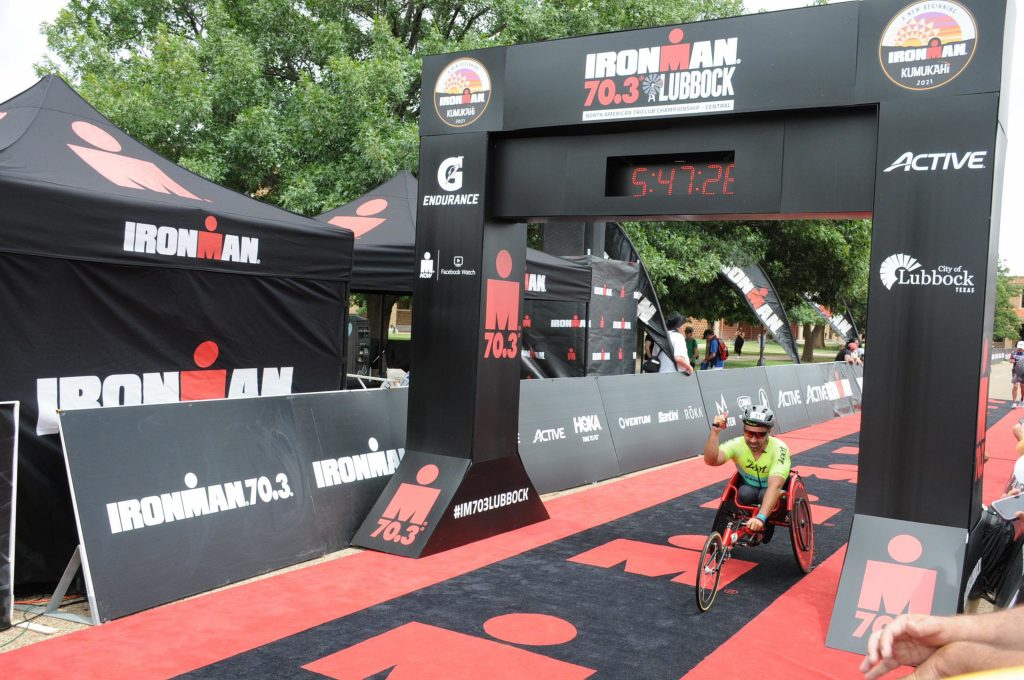One of my favorite books has a chapter titled, ‘Know your real edge and don’t fake it.’
I have found through my triathlon journey, both before and after my spinal cord injury, that my real edge is always farther out than I thought it was.
Meaning, I am consistently capable of more than I thought when I challenge that thought.
I believe that is true for all of us. Especially those who tell me they could never do a triathlon.
I see all kinds cross that triathlon finish line. Big, small, tall, short, paraplegic, quadraplegic, missing a limb, missing two limbs, cerebral palsy, heart attack, stroke, traumatic brain injury, congenial birth defect … you name it, someone has overcome it.
But I’ve pushed farther and farther, so much so that people argue with me that I’m just an average athlete (which all the data supports).
Case in point, my last major race: the 2019 IRONMAN 70.3 World Championships in Nice, France.
It ended in a DNF (Did Not Finish) because I didn’t make a hard time cut-off on the bike. There is, of course, more to that story and maybe I’ll write it up another day.
But coming home from such a defeat really stung and made me question everything.
Maybe I found my edge.
And maybe it was time to move on.
It mostly came down to swimming. I don’t have the benefit of 10,000 hours towards mastery many put in during their childhood. I picked up swimming in my late 30’s in order to do a triathlon.
During the race in Nice, I spent too much time and energy in the water. It put me too far behind in the race to make the hard time cut-off.
I didn’t admit it too many people, but I came home struggling to find motivation because maybe I just reached the edge.
Trying to balance my small business and relationship and training, I didn’t have any more time than I was already putting in to get better at swimming and make a difference in a race any time soon. Or even in time for next year.
And then a few months later, the pandemic hit.
All the races were eventually cancelled.
I decided now I have a year to get better. So I put my head down in 2020 and got to training. In the garage on the trainer, in our pool tied with a tether strap to the side. Eventually some pools opened with strict scheduling and distancing. We went to the pool almost every weekend since last September.
Earlier this year I really had my own crisis about it again, with a good sprinkle of lockdown fatigue that we all had.
There are 2 races globally where Handcycle Division slots to Kona are won this year: Finland and Lubbock, Texas.
I was looking at the competition; looking at my lack of progress in swim times; looking at how the cards were stacked for and against me to again qualify for the IRONMAN World Championships in Kona, Hawaii.
After a lot of consternation, I decided to stay committed to the goal I set.
“Commitment is doing what you said you would, long after the mood you said it in has left.”
I’m going to put in the work that I’m capable of,
run the best race that I can,
and let the cards fall where they may.
And so I trained, no longer looking back.
Watching 2021 unfold, they set a date for the Lubbock race. Since both Erika and I had been fully vaccinated, we decided to plan as if it was going to happen.
That brings us to the weather.
The first year we went in 2018, It was 102ºF with 27 mph sustained winds, gusts to 48 mph.
The second year we went in 2019, it was a [relative] wonderful 95ºF with minimal winds.
The third year in 2020 was .. cancelled 48 hours before the race due to COVID and luckily we had already postponed as the pandemic loomed large.
We started monitoring the weather a few weeks ahead of the race and it showed a high under 80ºF, but with chances of thunderstorms on race day … so we just noted that as we prepared for the trip.
We decided to take an extra day on both sides of the race and drive – mostly because we couldn’t be certain that airlines wouldn’t damage my wheelchair, race chair, or handcycle (which is unfortunately VERY common); and we wouldn’t risk fellow airplane passengers pulling stunts like they have been with frequency lately.
As race day came near, the chances of thunderstorms only got worse.
It was somewhat of an elephant in the room. They didn’t address it at the race briefing. They didn’t talk about contingency plans…
BUT, there were no thunderstorms on race day. It would barely reach 80º, which was awesome.
No, the thunderstorms came the night before the race.
AFTER we had all checked in our bikes in the transition area out in the open.
I arrived in the morning to a puddle in my handcycle seat which was completely drenched.

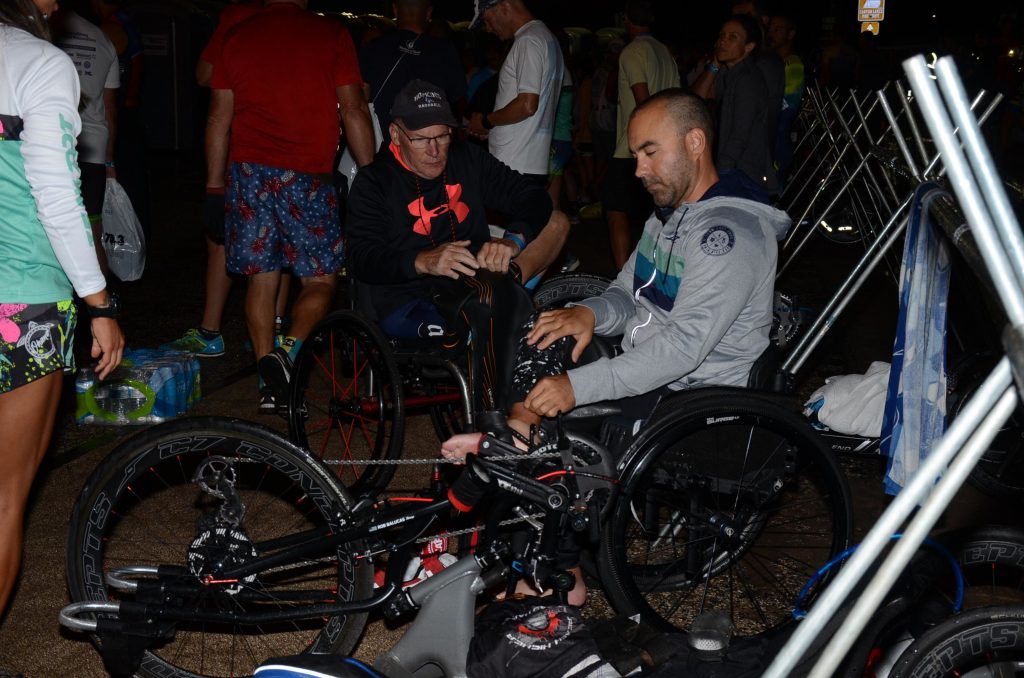
It was still drizzling in the dark and we had to contend with mud everywhere around the small lake we swam in.
It also made the lake really murky if you can imagine what intense rain churns up in a shallow man-made lake.
And it was all that and more. The 3 of us in the handcycle division started first, in the dark.
The other two competitors, on top of being better swimmers, have less disability relative to me (meaning that they have more core and/or leg function than me).
And as we expected they were much faster in the water.
I came out 22 minutes behind, even though it was a 2 minute personal best for me.
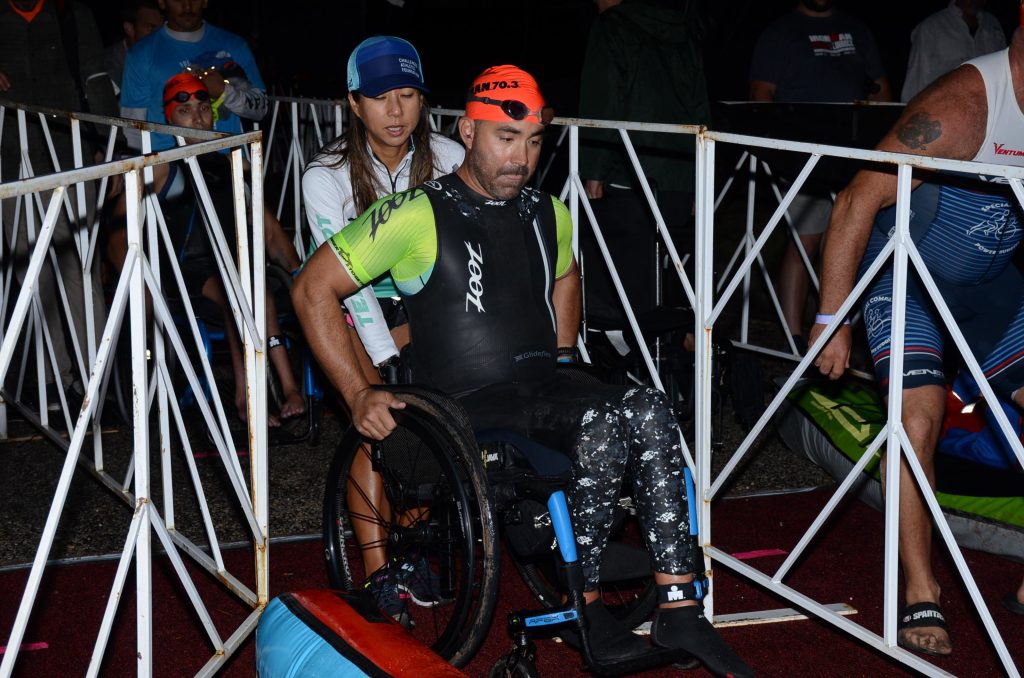
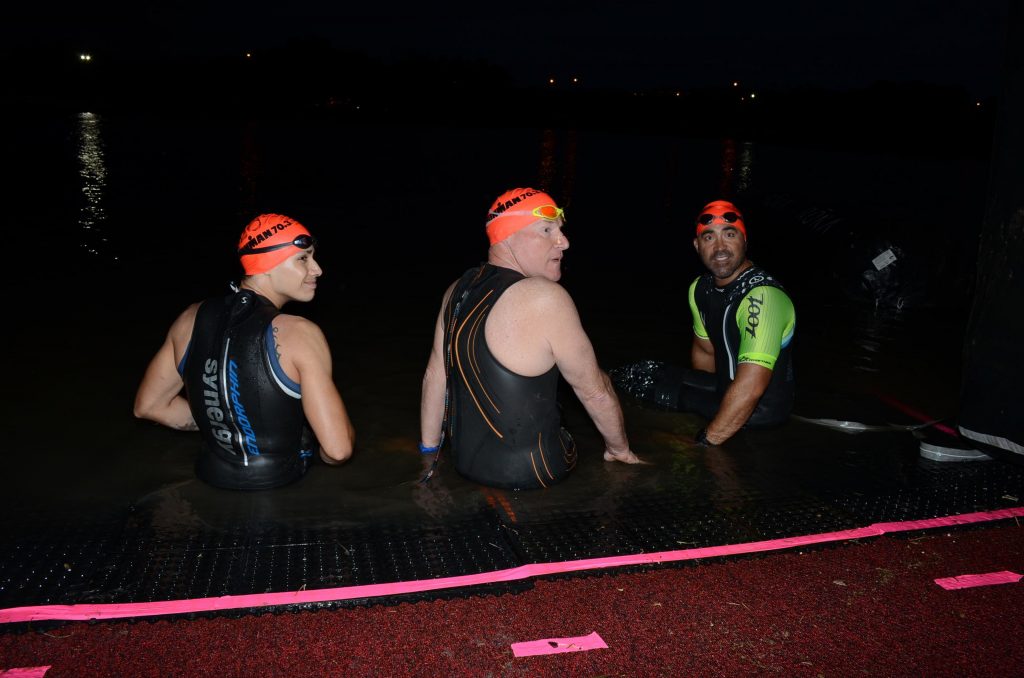
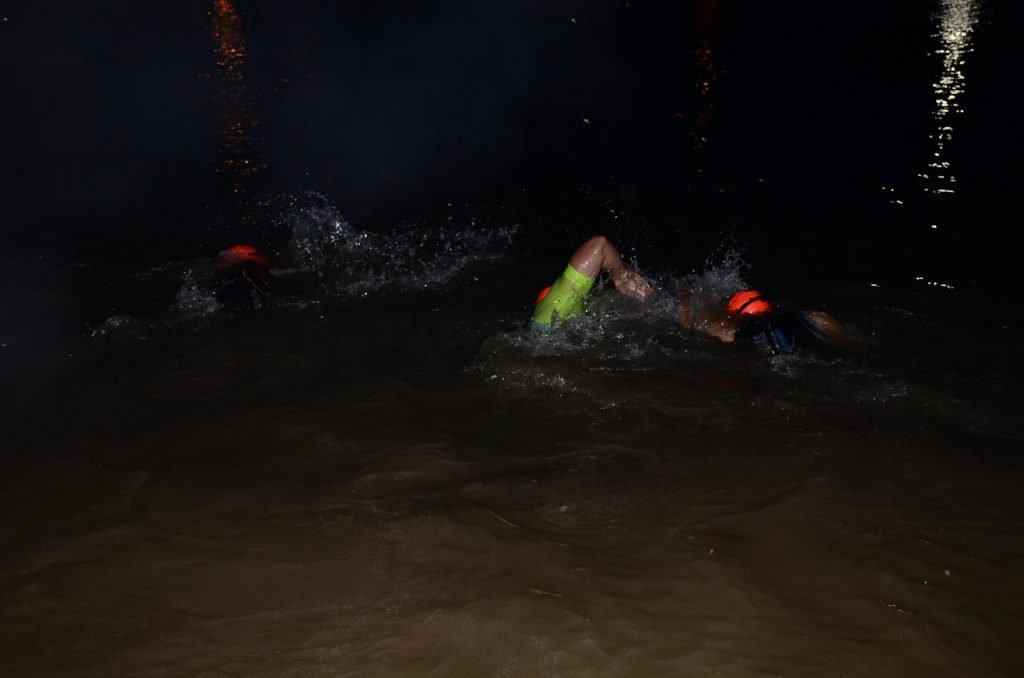
I went out on the bike and made up 17 minutes on the second place guy.
It was a new bike course and they all but eliminated the climbing.
[rant warning] It appears that while today’s triathlete says they want a challenge, they really just want to go fast but not hard. It seems like the registrations went up a lot with this new course.
So I beat my 2019 time by 42 minutes through wet roads and one very big puddle, but it only got me within 5 minutes of second place.
And only first and second place go to Kona.

I knew I had a chance of catching second place because this new run course was 3 laps around the Texas Tech campus. It was full of turning and 180º out and back sections.
On a racing wheelchair, all that sharp turning is a technical skill one has to master because race chairs aren’t built for sharp road turns. They are built for the gradual curve of a traditional track.
And then .. technical difficulties.
In the first mile or two of the total 13.2, one of the rubber pads on the paddle I use to push against the push rim wheels and propel myself forward … well, it just straight up fell off.
Which meant I couldn’t hit the pushrim as hard as I wanted, and generate my maximum speed.
In the next mile I found my race chair was steering to the left and I had to continually compensate, again cramping my ability to really crank hard.
I tried to fix it and accidentally unscrewed the ‘compensator’ completely. I had to stop completely and another able-bodied competitor stopped to help me and we got it fixed.
But by then it was too late.
I had no chance to make up those 5 minutes and ended up 22 minutes behind second place. While the competitor in me was still angry and annoyed for the next 24 hours, I did what I had set out to do.
I trained the best Rob Balucas could.
I laid down the best race Rob Balucas was capable of.
With a big asterisk of a new, very flat, very different course from 2019; I PR’d every element of the race even with the race chair issues.
I hit my bike and run goals, and missed my swim goal by 2 minutes.
So what now?
I did not qualify for the IRONMAN World Championships in Kona this year.
I did qualify for the IRONMAN 70.3 Championships in St. George, Utah.
But I decided not to go. St. George. St. George is an extremely difficult course with bike climbing at altitude – similar to what I faced in Nice, France. But for me, and for the expense, I didn’t have interest in another 70.3.
For me, it’s time to tackle a full distance IRONMAN.
I’ve been allowed to enter IRONMAN California in Sacramento on October 24th.
I’m very excited because it is the inaugural year of this new race – the only full distance IRONMAN in California.
(With some exceptions, only certain races are Handcycle Division-approved and I have to petition race directors to allow me to race.)
It’s time to test for a new edge.
Can I improve my swim enough in the next 110 days to swim 2.4 miles before the cut-off time? And then complete 112 miles of handcycling followed by a 26.2 mile marathon?
We’ll see.
Continued training ensues.
I haven’t yet put together the same crowdfunding campaign as in prior years. I’m working on that, but the bucket for it is setup.
But as in prior years, the financial demands of all the equipment necessary are high. I just recently found that my race chair wheels are cracked and bent and need replacement. Those alone are $3,000. I’m open to and work through sponsorships, so if you know of any please let me know!
Beyond that, if you’re so inclined:
